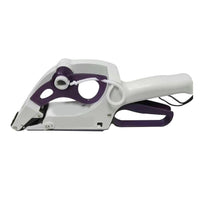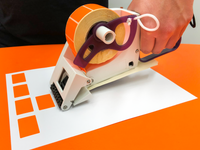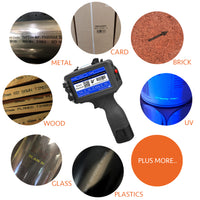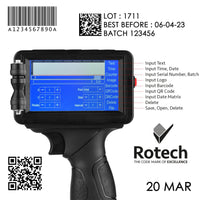READ TIME: 2 minutes
Barcodes are essential in manufacturing, trade and logistics. They help to collect data efficiently; prevent input errors and they even control entire systems.
However, for a barcode to work properly, they need to easily readable by cameras and scanners.
Here are some things you can do to help prevent barcode failure and ensure clear, compliant codes, every time.

- Print onto matte surfaces
Printing barcodes onto shiny or glossy surfaces can affect the readability of the code as they don’t optimally reflect the scanner’s infrared light, or they diffuse it too much. Try the following trick: print the barcode inverted by reversing the colours – instead of printing black lines, print white gaps.
- Print high-contrast codes
The more of a contrast there is between the code and the substrate, the easier it can be read by a camera or scanner. The best contrast can be achieved with a true black print onto an opaque, white background.
- Ensure good quality prints
An obvious one, but if areas of the barcode are damaged in any way, they can no longer be read by scanners.
There are many reasons why a printer could be producing poor quality prints, such as clogged nozzles, damage to the printhead, or poor quality ink or ribbon – read our ‘how to’ guide on choosing the right thermal ribbon here.
Incidentally, despite it’s seemingly complex appearance, a datamatrix code is not as complicated as a traditional barcode – it has a high fault tolerance, which means that it is still legible, even if up to 30% of the code is damaged or distorted.
- Don’t violate ‘quiet zones’
For the scanner or reader to be able to recognise the start and end of the code, it needs to be surrounded by a sufficiently large white area, known as the ‘quiet zone.’
This area ought to be at least 5 times the width of the narrowest bar. Ensure that nothing gets in the way of the quiet zone, even subsequent finishing (e.g. film lamination).
- Follow specified standards
In many cases, your barcodes will need to be accepted by other companies throughout the supply chain. This means that your codes will need to meet certain requirements that specify print quality, colour, height and background, as well as it’s position on the packaging or label.
Organisations such as GS1, which drive the global development and standardisation of barcodes, provide guidelines, tools and services.
- Accessibility
Barcodes should not be obscured in any way when they are being scanned. Ensure that the barcode is easily accessible, protected from dirt, buckling and any other potential damage risks.
If you have any further questions or would like more advice on how to print high quality codes on your product, contact us.







